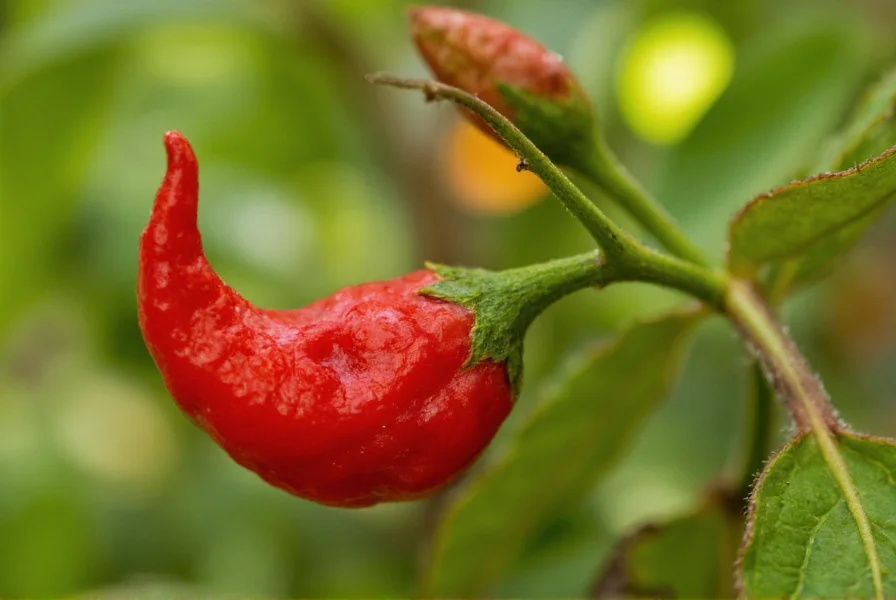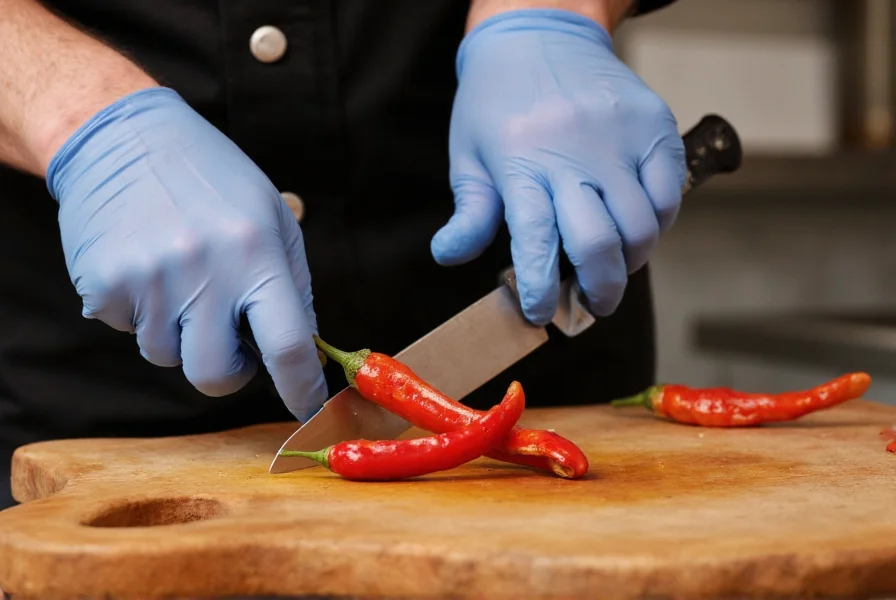The Apocalypse Scorpion Pepper represents one of the most extreme entries in the world of superhot chili peppers. This carefully cultivated hybrid delivers not just intense heat but a complex flavor profile that distinguishes it from other members of the superhot pepper family. Understanding this pepper requires examining its origins, heat measurement, physical characteristics, and appropriate usage methods.
Understanding the Heat Level of Apocalypse Scorpion Pepper
When discussing how hot is apocalypse scorpion pepper, we're dealing with serious heat measurements. The Apocalypse Scorpion typically registers between 1.5 and 2 million Scoville Heat Units (SHU), placing it firmly in the superhot category. To provide context for apocalypse scorpion pepper vs carolina reaper comparisons, the Carolina Reaper generally ranges from 1.4-2.2 million SHU, meaning these two peppers occupy similar heat territory, though individual specimens can vary significantly.
What makes the heat experience unique is its progression: initial fruity notes give way to building warmth that eventually delivers an intense, lingering burn. This heat pattern differs from some superhots that deliver immediate, overwhelming heat. The Apocalypse Scorpion's heat develops gradually but becomes extremely potent within minutes, requiring careful consumption.
| Pepper Variety | Scoville Range (SHU) | Relative Heat |
|---|---|---|
| Apocalypse Scorpion | 1,500,000-2,000,000 | 8-10x hotter than habanero |
| Carolina Reaper | 1,400,000-2,200,000 | 8-11x hotter than habanero |
| Trinidad Moruga Scorpion | 1,200,000-2,000,000 | 7-10x hotter than habanero |
| Ghost Pepper (Bhut Jolokia) | 800,000-1,041,427 | 5-6x hotter than habanero |
Origin and Development History
Breeder Joe Cerniglia of Pepper Joe's created the Apocalypse Scorpion Pepper through selective hybridization. Unlike naturally occurring peppers, this variety was deliberately developed by crossing the Trinidad Moruga Scorpion (itself an extremely hot pepper) with the Ghost Pepper (Bhut Jolokia). This breeding process aimed to combine the most desirable traits from both parent peppers while maximizing heat potential.
The name "Apocalypse" reflects both the pepper's extreme heat and its dramatic visual appearance. The distinctive curved tip resembling a scorpion's tail gives this pepper its secondary name component. Understanding the apocalypse scorpion pepper origin story helps explain why it possesses such remarkable heat characteristics compared to more common chili varieties.

Physical Characteristics and Maturation
Apocalypse Scorpion Peppers typically mature to 1.5-2 inches in length with a distinctive curved tail. They begin as green peppers and gradually transition through yellow and orange stages before reaching their final vibrant red color at full maturity. The skin has a slightly bumpy, textured appearance rather than being perfectly smooth.
When growing apocalypse scorpion peppers at home, gardeners should note that these plants require approximately 90-100 days to reach full maturity from seed. The plants themselves grow to about 3-4 feet tall and produce moderate yields of peppers. Like other superhots, they benefit from warm temperatures and consistent watering, though they're relatively drought-tolerant once established.
Flavor Profile Beyond the Heat
Despite its fearsome heat rating, the Apocalypse Scorpion Pepper offers a surprisingly complex apocalypse scorpion pepper flavor profile. Before the intense heat sets in, consumers often detect distinct fruity notes with hints of citrus and tropical fruit. Some describe subtle smoky undertones that develop as the pepper matures on the plant.
This flavor complexity makes it valuable for culinary applications where simply extreme heat isn't the only goal. When used judiciously, it can add both heat and nuanced flavor to sauces, marinades, and specialty dishes. The challenge lies in harnessing these flavors without overwhelming other ingredients with excessive heat.
Safe Handling and Culinary Applications
Working with Apocalypse Scorpion Peppers requires serious precautions. Always wear nitrile gloves when handling these peppers, as capsaicin can cause severe skin irritation. Avoid touching your face, especially eyes, during and after handling. Consider using safety glasses to prevent accidental eye contact with pepper oils.
For culinary use, start with minuscule amounts—a tiny piece the size of a pinhead can flavor an entire dish. Many chefs recommend removing seeds and membranes (where most capsaicin concentrates) to moderate the heat while retaining flavor. The apocalypse scorpion pepper uses span hot sauces, infused oils, specialty salsas, and even some dessert applications where just a hint of heat complements sweet flavors.

Availability and Growing Considerations
Finding fresh Apocalypse Scorpion Peppers can be challenging due to their extreme heat and limited commercial cultivation. Specialty hot sauce producers and select farmers' markets occasionally carry them during peak season. For those interested in growing apocalypse scorpion peppers, seeds are available from specialty chili growers, though germination can be challenging and requires warm conditions (80-90°F).
Home growers should be aware that environmental factors significantly impact heat levels. Stressors like inconsistent watering or temperature fluctuations can increase capsaicin production, making home-grown peppers potentially hotter than commercial specimens. Always label plants clearly to prevent accidental consumption by unaware individuals.
Safety Considerations for Extreme Heat Peppers
Consuming Apocalypse Scorpion Peppers carries genuine risks. The intense capsaicin concentration can cause severe gastrointestinal distress, temporary breathing difficulties, and even require medical attention in sensitive individuals. Never consume large quantities, and always have dairy products (which contain casein that binds to capsaicin) readily available to mitigate excessive heat.
When creating products with this pepper, clearly label them with appropriate heat warnings. Many jurisdictions require specific labeling for superhot peppers due to their potential health risks. Understanding handling extremely hot peppers safely isn't just recommended—it's essential for preventing serious discomfort or injury.
Frequently Asked Questions
How does the Apocalypse Scorpion Pepper compare to the Carolina Reaper in heat?
Both peppers occupy similar heat ranges (1.5-2 million SHU), though individual specimens vary. The Carolina Reaper generally averages slightly higher at 1.4-2.2 million SHU versus the Apocalypse Scorpion's 1.5-2 million SHU. The heat experience differs slightly—the Apocalypse Scorpion builds more gradually while the Reaper often delivers immediate intense heat.
Can you grow Apocalypse Scorpion Peppers in a home garden?
Yes, but with challenges. These peppers require 90-100 days to mature, warm temperatures (75-90°F), and consistent watering. Start seeds indoors 8-10 weeks before last frost. Plants grow 3-4 feet tall and produce moderate yields. Exercise extreme caution when handling plants and harvests due to the intense capsaicin content.
What's the best way to use Apocalypse Scorpion Pepper in cooking?
Use extreme caution with portion sizes—a pinhead-sized piece can flavor an entire dish. Remove seeds and membranes to reduce heat while retaining flavor. Ideal for hot sauces, infused oils, and specialty salsas. Always wear gloves during preparation and clearly label any products made with this pepper due to its extreme heat potential.
How should I handle accidental skin contact with Apocalypse Scorpion Pepper?
Immediately wash affected area with soap and cool water. Avoid hot water as it opens pores. Apply milk, yogurt, or other dairy products to neutralize capsaicin. For severe reactions, use vegetable oil to dissolve the capsaicin oil before washing. Never rub the affected area, and seek medical attention if irritation persists or affects sensitive areas like eyes.
Does the Apocalypse Scorpion Pepper have any flavor beyond just heat?
Yes, it offers a complex flavor profile with distinct fruity notes (citrus and tropical fruit) before the intense heat develops. Some detect subtle smoky undertones, especially in fully mature red peppers. This flavor complexity makes it valuable for culinary applications where nuanced heat and flavor are desired, not just extreme spiciness.










 浙公网安备
33010002000092号
浙公网安备
33010002000092号 浙B2-20120091-4
浙B2-20120091-4